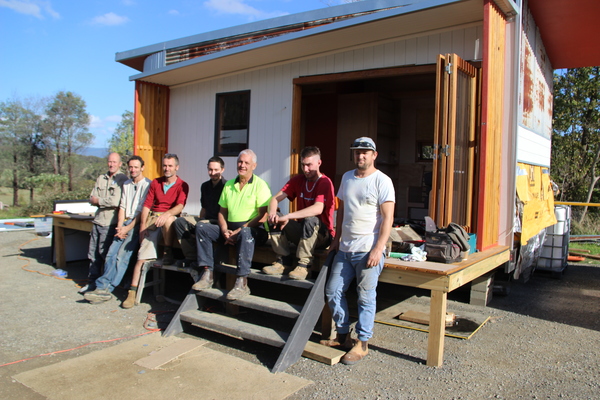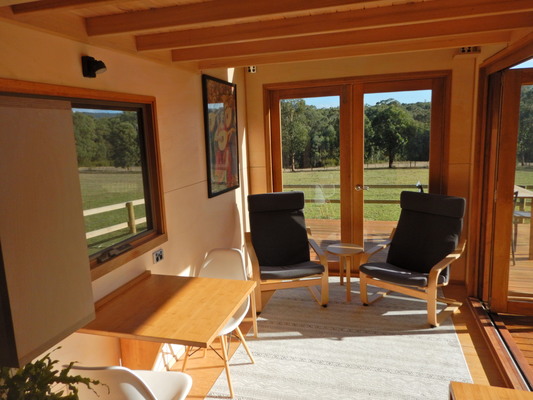By Kath Gannaway
Tiny houses have quite a history in Melbourne, but its fair to say the current trend is part of a world-wide, 21st century revolution.
The first tiny houses were built in the 1850s in answer to Melbourne’s gold rush population explosion.
The small, rudimentary homes were shipped from England in kit form and rebuilt on site. They served a purpose – not so different to today’s.
Fast forward 150-odd years, and, in an environment where Australian homes are the largest in the world, we’re embracing the concept of living more simply, more sustainably, and with a whole lot more freedom from the burden of ‘stuff’ and debt.
So, what is a tiny house? They come in a range of sizes, but typically are around 30 square metres, and are usually ‘mobile’ – or moveable.
The secret to living tiny is about clever and innovative design that maximises every bit of available space but provides the essentials such as a kitchen, living space, bathroom and bedroom at a scaled down level.
For the Pinnock family in Toolangi, going tiny was very much a lifestyle and ideological choice, but Joanna says it was made easier because they were coming from living in a smallish apartment in Singapore.
“We didn’t have a lot of stuff, so it wasn’t a big deal to fit everything in, but it was definitely, primarily about living with less and with a smaller footprint.
“It’s all part and parcel of having a lesser impact on the environment; part of the zero waste movement, so we try to reduce plastic consumption, and consumption in general,” Joanna said.
Joanna and Mark researched and built their tiny house themselves using recycled materials where they could.
At 13.6 metres long and 2.4 metres wide, it’s compact – especially as it is now home also to baby Alba.
Making clever use of space is the key and Mark and Joanna had been researching for a few years before they settled on a design.
“We found a plan that was similar to what we wanted and adjusted it to meet our needs,” Joanne said.
Part of that was raising the loft as Mark is quite tall, and including a substantial outdoor deck which is very much their living and dining area in the warmer months.
“It’s nice because you don’t have a lot of space to clean; I like that because you have more time to do other things,” Joanna said.
“I don’t think it’s for everyone, but it’s good for us and the fact that we made it ourselves feels really good.”
Ric Butler, is part of a team of four friends – a builder, a designer, a cabinet maker and a business man – behind Tinyhouse2go, based at ECOSS at Wesburn.
The name gives a clue to the flexibility behind the concept with their tiny houses designed to be delivered anywhere in Australia.
What it doesn’t reflect is the exceptional design and finish that maximises usability and has loads of ‘WOW’.
A driving factor behind Tinyhouse2go is providing accommodation where it’s needed – addressing the housing shortage.
“What we’ve done is develop our homes for the Australian climate which is all about decking and outdoor living with big doors, big windows and bringing the outside in,” Ric said.
Design is the key to livability, with features such as a solar power, a pull-out pantry, fold down bed or loft bedroom space, smart shelving and storage,but it is the beautifully crafted finish that makes it a beautiful living space.
“People are building these houses and wanting them for lots of different reasons and we’re currently working with a group who have donated land to have about five tiny houses for emergency housing,” Ric said.
“Older women with no super are another group who may want to downsize. If they have a unit to sell and somewhere to put it, they can spend $100,000 on a tiny house and have $300,000 to live on.”
Ric’s own, bespoke tiny house is set up as a B&B in a beautiful rural location in the Upper Yarra and it’s easy to how visitors would delight in spending time in the tranquil setting with everything that’s needed for a relaxed holiday with a difference.
The tiny house movement is moving along at a pace, and while, as Joanna says, it may not be for everyone, it has the potential to change the way people live, with a roof over their heads, and stepping lightly on the earth.










